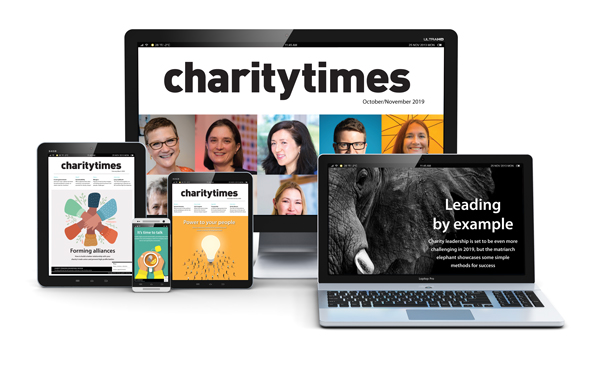He is a life-size spray-paint cartoon policeman. Garish colours on the gloom of a canal
towpath wall. A chubby white policeman with oddities: his hat sports a peace sign and his
jacket reads ‘Peace Officer’. This is the latest London canal graffiti on my walk to work.
Next to him is a 2m high dog wearing a beanie. His message is Caring Is Cool. And while I
love a mutt with a message, it was the policeman that stuck with me.
Recently I have felt like I’m patrolling. Policing, protective of the charity’s users. Why?
Because as you may have noticed the hunger for individuals’ data and content for media has
arrived in CharityLand.
Visual content is at the heart of how a charity justifies itself in a way that we’ve never had
before: digital presence, digital marketing, digital fundraising. At the same time, focus on
proof and outcomes has grown phenomenally. Together – images of what your charity does
and precise data on what it achieves – are now a crux around which we spin.
First, visual images. Let’s just say it: the cute puppy charities are on to a winner here. But all
of us need visuals for campaigns, reports, promotions, events, merchandise and online
content. And beneficiaries’ images are not just of value to your organisation. An image of a
beneficiary can add Brand Value to any number of individuals, companies, sponsors and
supporters. As it is worth something, it’s possible to trade imagery for a benefit. And that
may be good judgement. But charity leaders have the responsibility of weighing up the good
and bad for beneficiaries, the charity, or the public good.
Then there’s data. User information has long been a topic for academics. Sample sizes,
anonymised datasets, ethics committees and consents have become consistent. In contrast,
data reports requested of charities vary enormously. The degree of intrusion, use of time
and resource used needs to be considered against the value of information for a funder,
partner, stakeholder, and the charity. This is particularly true of projects with high evidence requirements. If done wrong beneficiaries can feel like they are in an academic study rather
than a place of help.
Thoughts on navigating this:
• Sidestep a photo with graphics. Maybe text, cartoons, colours or icons can
communicate what is happening and promote your brand without as much emphasis
on individuals.
• Use your team. Risks and benefits for staff are different from a beneficiary of the
charity so they can be better in the limelight.
• Boldly check and push back on details. Push back if you are unhappy about how
long data is held or with methodologies for collecting data. Look at how long a
photograph is available for use, where is it permitted for use – printed or online,
what channels, in what contexts and with what campaign or messaging. Remember
who you exist to protect.
Fundamentally, we must keep a ‘consent isn’t enough’ mindset. Legally, a signed document
can permit something to happen. But you bring the context. You know your beneficiaries
may well be vulnerable and have deep gratitude for your service. Being alive to these
sensitivities means you are not shirking the ethical responsibility that comes with your
commercial responsibility.
So charity leaders deal with ethical conflicts. Conflicts of perfect information against
practical challenges. Conflicts of morals and modern marketing. Conflicts of data and
motivation. No wonder the street art made me stop and smile in my soggy raincoat in the
drizzle. Peace Officers we are, and Peace Officers we will continue to be.
Charity Times video Q&A: In conversation with Hilda Hayo, CEO of Dementia UK
Charity Times editor, Lauren Weymouth, is joined by Dementia UK CEO, Hilda Hayo to discuss why the charity receives such high workplace satisfaction results, what a positive working culture looks like and the importance of lived experience among staff. The pair talk about challenges facing the charity, the impact felt by the pandemic and how it's striving to overcome obstacles and continue to be a highly impactful organisation for anybody affected by dementia.
Charity Times Awards 2023
Mitigating risk and reducing claims

The cost-of-living crisis is impacting charities in a number of ways, including the risks they take. Endsleigh Insurance’s* senior risk management consultant Scott Crichton joins Charity Times to discuss the ramifications of prioritising certain types of risk over others, the financial implications risk can have if not managed properly, and tips for charities to help manage those risks.
* Coming soon… Howden, the new name for Endsleigh.
* Coming soon… Howden, the new name for Endsleigh.
Better Society

© 2021 Perspective Publishing Privacy & Cookies











Recent Stories